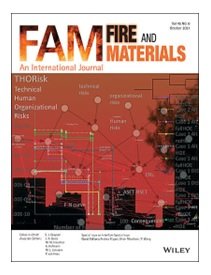
Tests on 72 formulations of 10 polymers show no significant increase in smoke density or toxicity with PIN FRs. The tests, carried out by CREPIM France and funded by 12 pinfa member companies, applied the European railway standard EN 45545-2 as a recognised state-of-the art for smoke hazard testing. Widely used polymers were tested (including polyethylene, polypropylene, polycarbonate, polyamide, PVC, polyurethane, polyisocyanurate): neat, with market-relevant PIN FRs dosed as used, and also with relevant brominated FRs. Other additives and FR synergists, which would be found in commercial formulations, were not included to enable clarity of results. Smoke density (which is critical for escape from fires) and emission of eight toxic smoke gases were measured (CO, CO2, HBr, HCl, HCN, HF, NOx, SO2). There was a wide variation of smoke emission and smoke toxicity between polymers, but the following general overall conclusions could be identified for effects of PIN flame retardants (except for in PVC which showed inherently high smoke toxicity using this test method). Maximum smoke density and indices of toxicity generally showed no significant increase when PIN FRs were added to the polymer (compared to neat polymer). Intumescent PIN FRs and inorganic (hydroxide) FRs reduced smoke density without significant impact on smoke toxicity. Brominated FRs, in most cases, increased measured smoke and/or toxicity.
“The impact of halogen free phosphorus, inorganic and nitrogen flame retardants on the toxicity and density of smoke from 10 common polymers”, H. Feuchter, F. Poutch, A. Beard, Fire and Materials. 2023;1–21, https://doi.org/10.1002/fam.3145